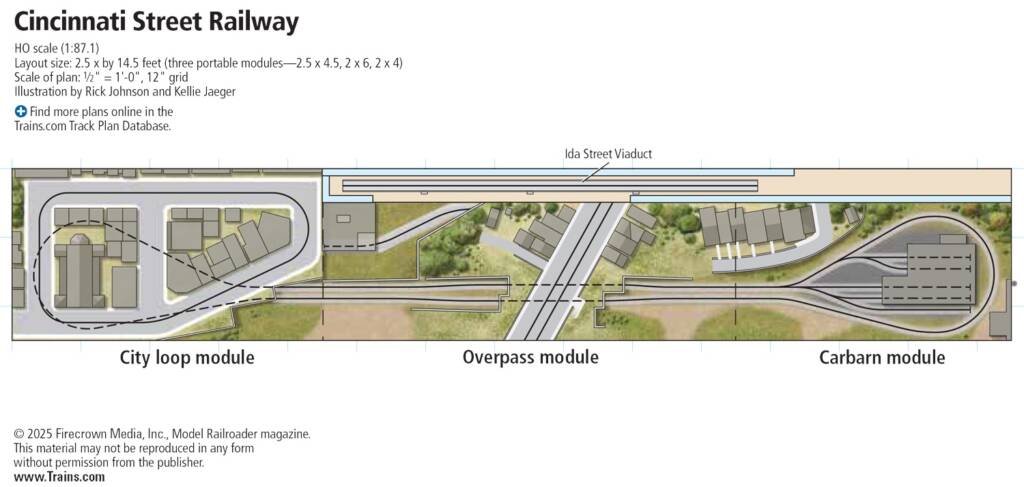
Facts and features Name: Cincinnati Traction Scale: HO (1:87.1) Size: 2′-6″ x 14′-6″ Prototype: Cincinnati Street Ry. (city streetcars) and Cincinnati & Lake Erie (interurban) Locale: Cincinnati, Ohio Era: 1930s and ’40s Style: shelf Mainline run: Approximately 24 feet (dogbone on interurban rapid transit line) Minimum radius: 7″ on streetcar line, 11″ on interurban rapid […]
Read More…
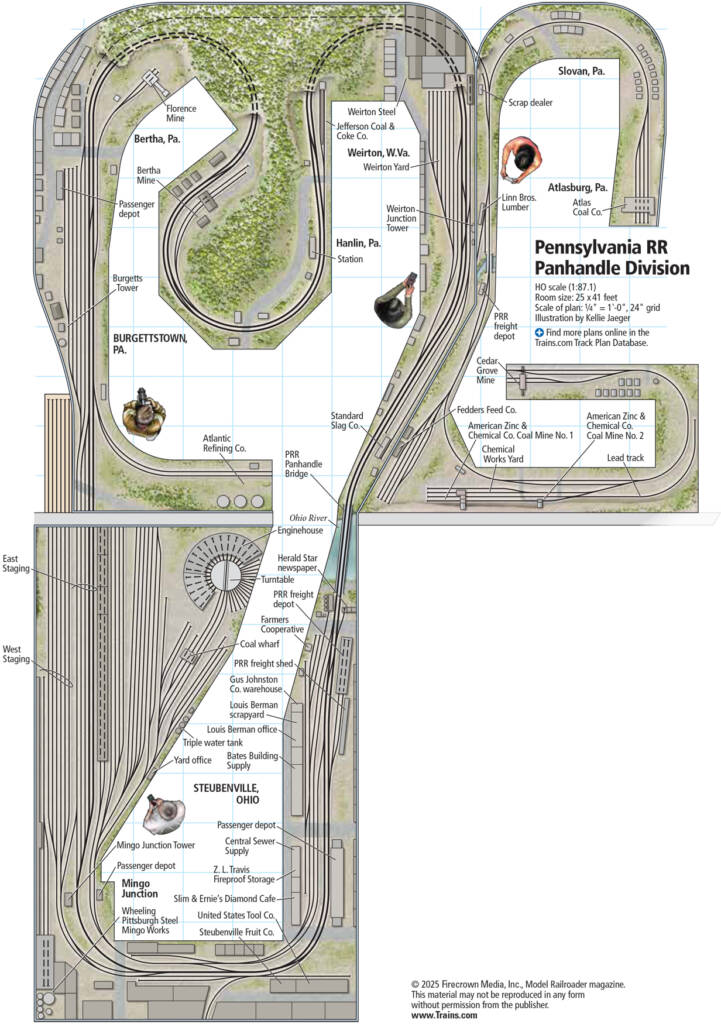
Facts and features Name: Pennsylvania RR Panhandle Division Scale: HO (1:87.1) Size: 25 x 41 feet Prototype: Pennsylvania RR Locale: eastern Ohio, western Pennsylvania, and West Virginia panhandle Era: late 1940s and early 1950s Style: walk-in Mainline run: 150 feet Minimum radius: 36″ (main), 24″ (branch) Minimum turnout: No. 6 (main), No. 5 (branch) Maximum […]
Read More…
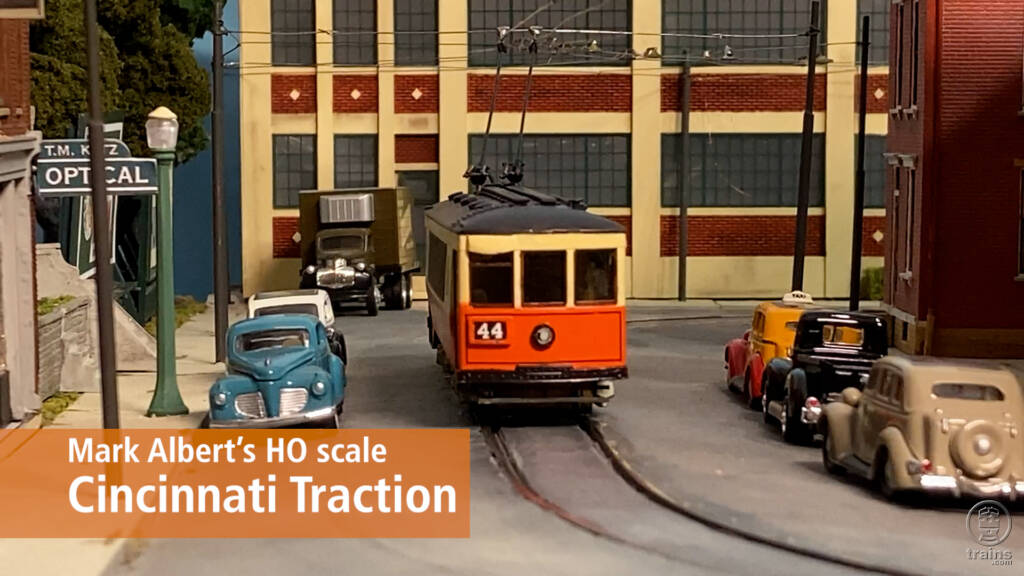
Dive into the captivating world of Cincinnati’s traction history with Mark Albert’s stunning HO scale model railroad! Originally built to travel to train shows, this layout, presented in the October 2025 issue of Model Railroader magazine, has found its permanent home, allowing for incredible new details and enhancements. Explore intricately modeled street scenes complete with […]
Read More…
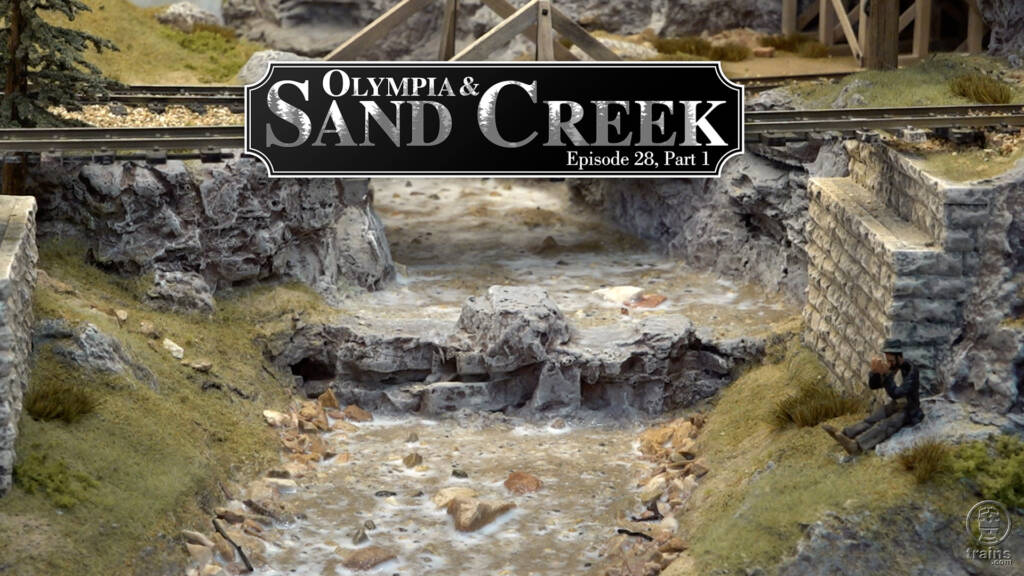
In this episode, David Popp builds out a river with rapids and waterfalls for his Olympia & Sand Creek On30 logging layout. He gets things started by sharing his proven method for installing styrene dams to contain the resin “water” pour. Next, David focuses on creating the riverbed with a mix of sand, rock, and earth. […]
Read More…
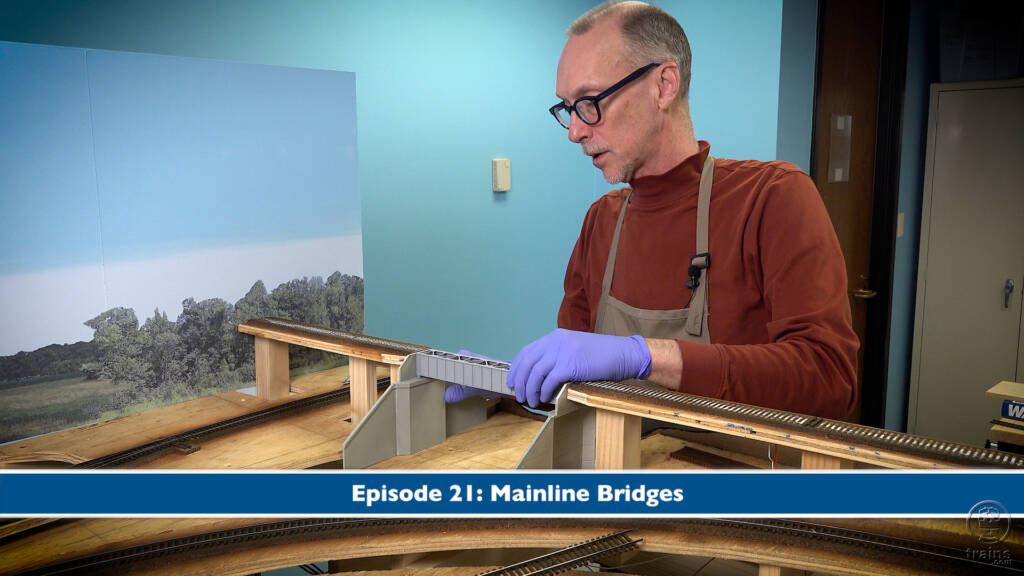
Enthusiasts of railroad engineering will enjoy this helpful, instruction episode, which details how to build and install bridges and abutments on a model train layout. Following the Canadian National prototype, this video focuses on a 70-foot single-track deck girder bridge and a 30-foot single-track through girder bridge. Learn how to properly use a Walthers bridge […]
Read More…
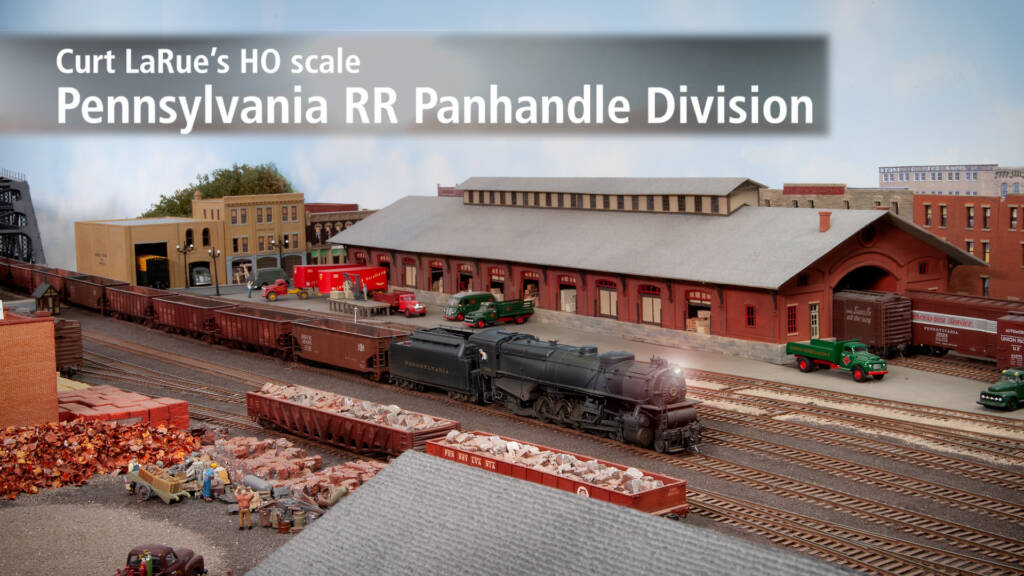
Embark on an epic journey back to the late 1940s and early ’50s, as depicted on Curt LaRue’s HO scale (1:87.1) Pennsylvania Railroad Panhandle Division! Originally presented in the October 2025 issue of Model Railroader magazine, this stunning layout comes to life as cameras capture various modeled rural and industrial sites along the multi-track mainline […]
Read More…
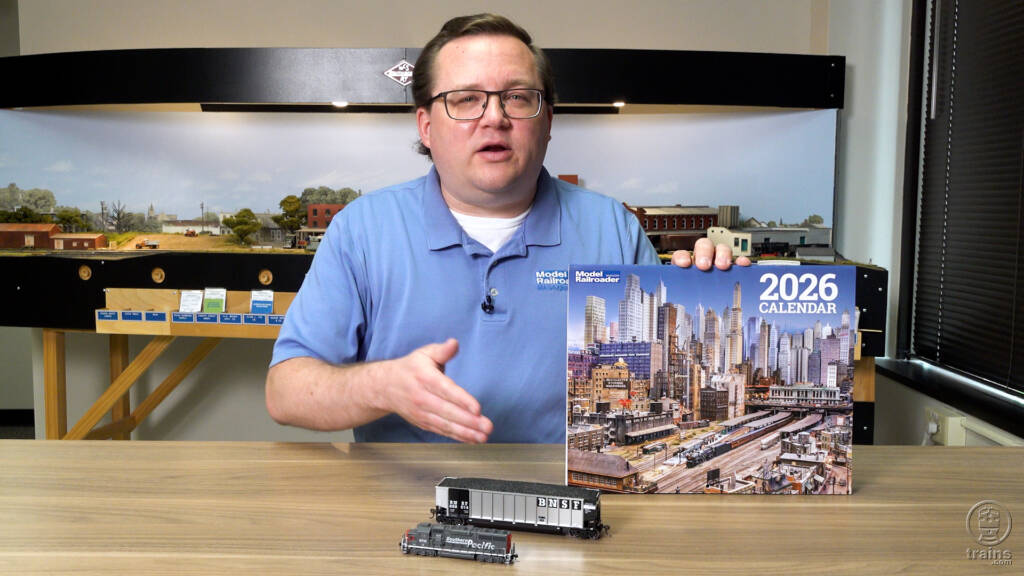
Football is getting underway, pumpkin spice everything is showing up on store shelves, and the thermometer has given a few hints that autumn is just around the corner. Of course, that means we’re heading into peak model railroading season. In the September 2025 episode of Cody’s Office, we feature three new products, a modeling tip, […]
Read More…
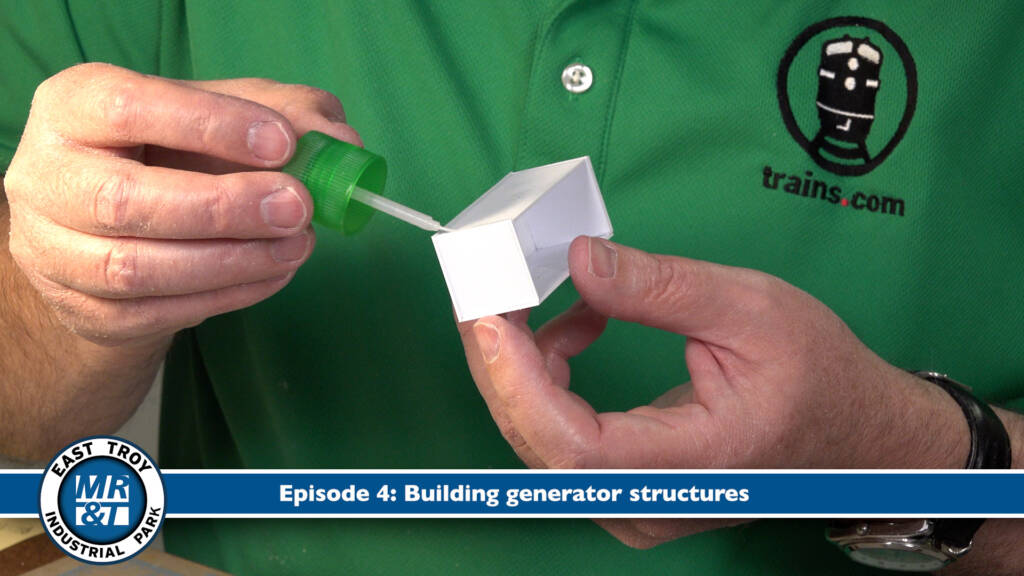
Follow Model Railroader magazine Editor Eric White as he demonstrates how to scratchbuild generators for the HO scale (1:87.1) East Troy Industrial Park Project Railroad. Using manufactured shipping containers as a guide, Eric constructs the generator structures using .040″ styrene sheets. He details the process of cutting and assembling the frame for the units, and […]
Read More…
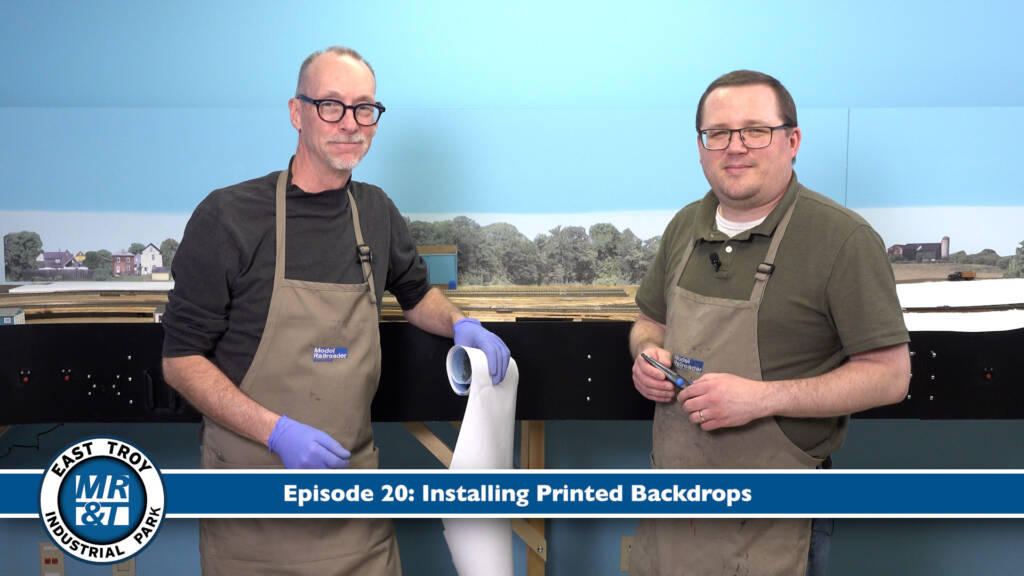
Trains.com staff members David Popp and Cody Grivno share their techniques for install printed backdrops on the HO scale (1:87.1) East Troy Industrial Park project layout. They use SceniKing paper backdrops and unique craft scissors to seamlessly blend printed scenes—including a river, barn, and tree line—into the painted sky. All of that, plus more scenery […]
Read More…
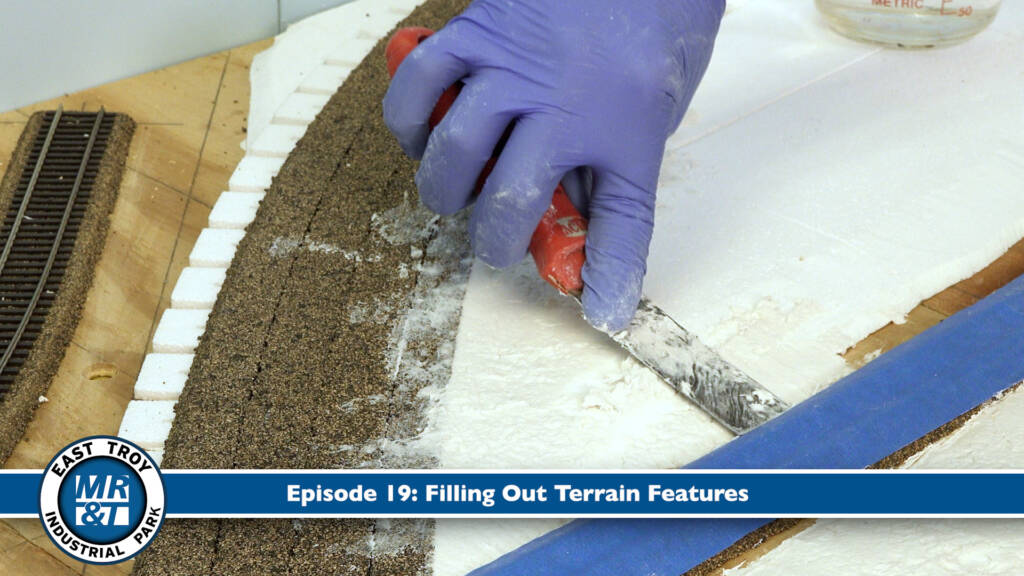
Watch David Popp demonstrate his technique for sliding into a scene — it’s a slippery slope, as he creates realistic rolling hillsides and drainage ditches using foam material and Sculptamold! Elsewhere on the HO scale (1:87.1) East Troy Industrial Park project layout, Bryson and Cody showcase a new 3D-printed resin depot. All of that, plus […]
Read More…
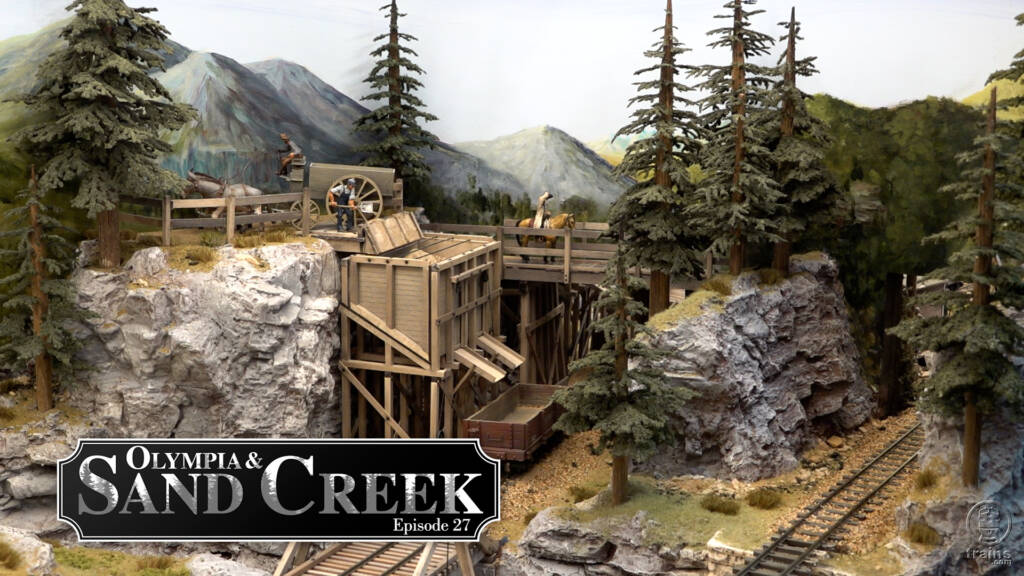
Scenes on David Popp’s Olympia & Sand Creek On30 logging layout are starting look much more rustic…and realistic too! Follow along as David share his techniques for adding trees, detailed ground cover, and even placing a few authentic figures into the scene. View the complete Olympia series exclusively on Trains.com Video! […]
Read More…
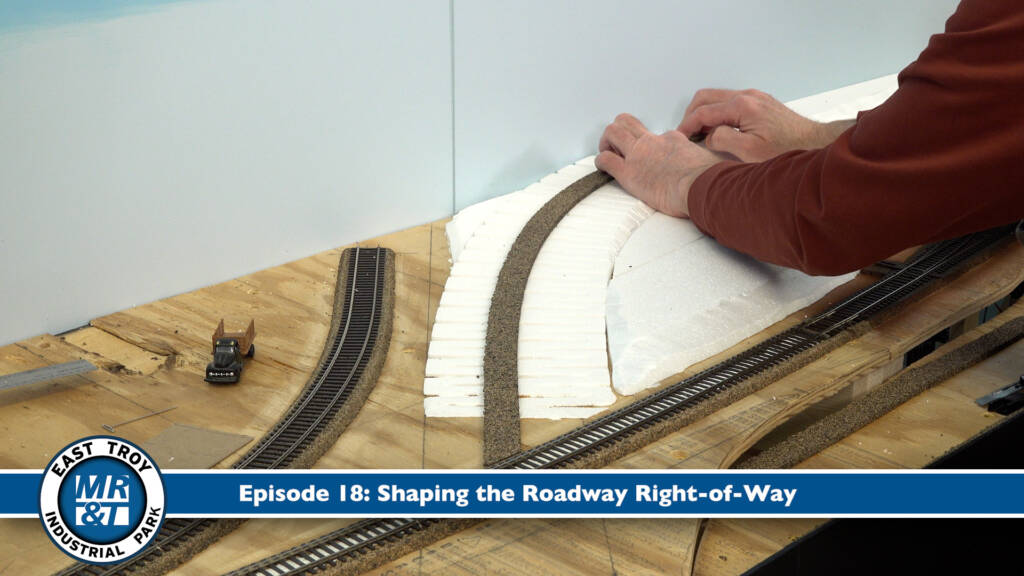
Host David Popp continues to make progress on the roadway scenery he started in Episode 17 of the HO scale (1:87.1) East Troy Industrial Park project layout series. In this episode, David shares techniques for working with the foam material he selected to create sloped landforms along the inclined roadway. Then it’s back to the […]
Read More…












